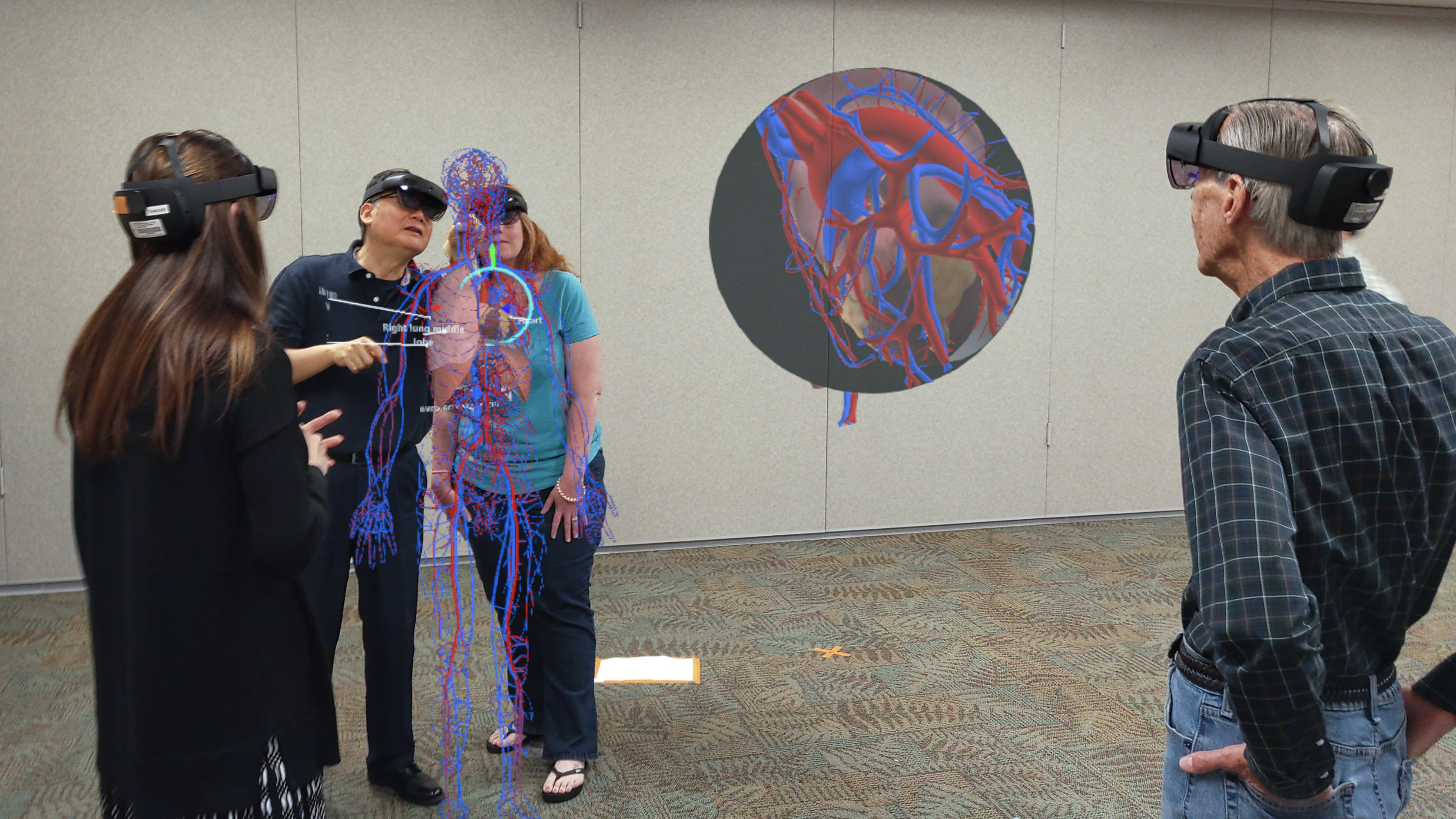May 2, 2024

Last year, Technology Services introduced an innovative teaching tool, HoloLens, a mixed-reality device from Microsoft, to the Texas A&M University School of Medicine. This cutting-edge technology blurs the lines between the digital and physical realms, offering a unique learning experience that starkly contrasts virtual reality by allowing users to interact with holograms in their actual environment.
At the heart of this technological leap is HoloAnatomy, a software crafted by Case Western Reserve University and Cleveland Clinic, specifically designed to transform the study of medical gross anatomy. With HoloAnatomy, students can delve into a three-dimensional human body model, gaining unprecedented detail and insight. They can dissect layers to uncover hidden anatomical layers, magnify them for a closer look, and navigate around the model, all within the confines of their physical space.
This innovative teaching method not only overcomes the traditional challenges associated with cadaver-based learning—such as cost, ethical concerns, and health risks—but also provides a solution for students with visual impairments.
Take, for example, the story of John Smith (name withheld for privacy), who is legally blind and has color and contrast deficits. He shared, "[As] someone with a visual impairment, the modalities for learning gross anatomy, histology and neuroanatomy are relatively limited.” Using the HoloLens Altered Reality (AR) headset helped him identify vasculature – a task he had extreme difficulty with in the gross anatomy lab. With HoloLens AR, he could adjust the hologram's contrast and brightness to make it easier to see. He was also able to isolate specific vessels and label them to reference an assignment he could not accomplish in gross anatomy.
HoloAnatomy, with its customizable visual settings, opens a new world of learning for students, making studying anatomy enjoyable and practical.
The trial of HoloAnatomy at the School of Medicine is more than just a test of new software; it's a step towards broader collaborations within the Texas A&M Health network, leveraging innovative technology to enhance student learning. This initiative is a testament to the transformative potential of virtual and augmented reality in education, offering a more inclusive, precise, and engaging learning experience.